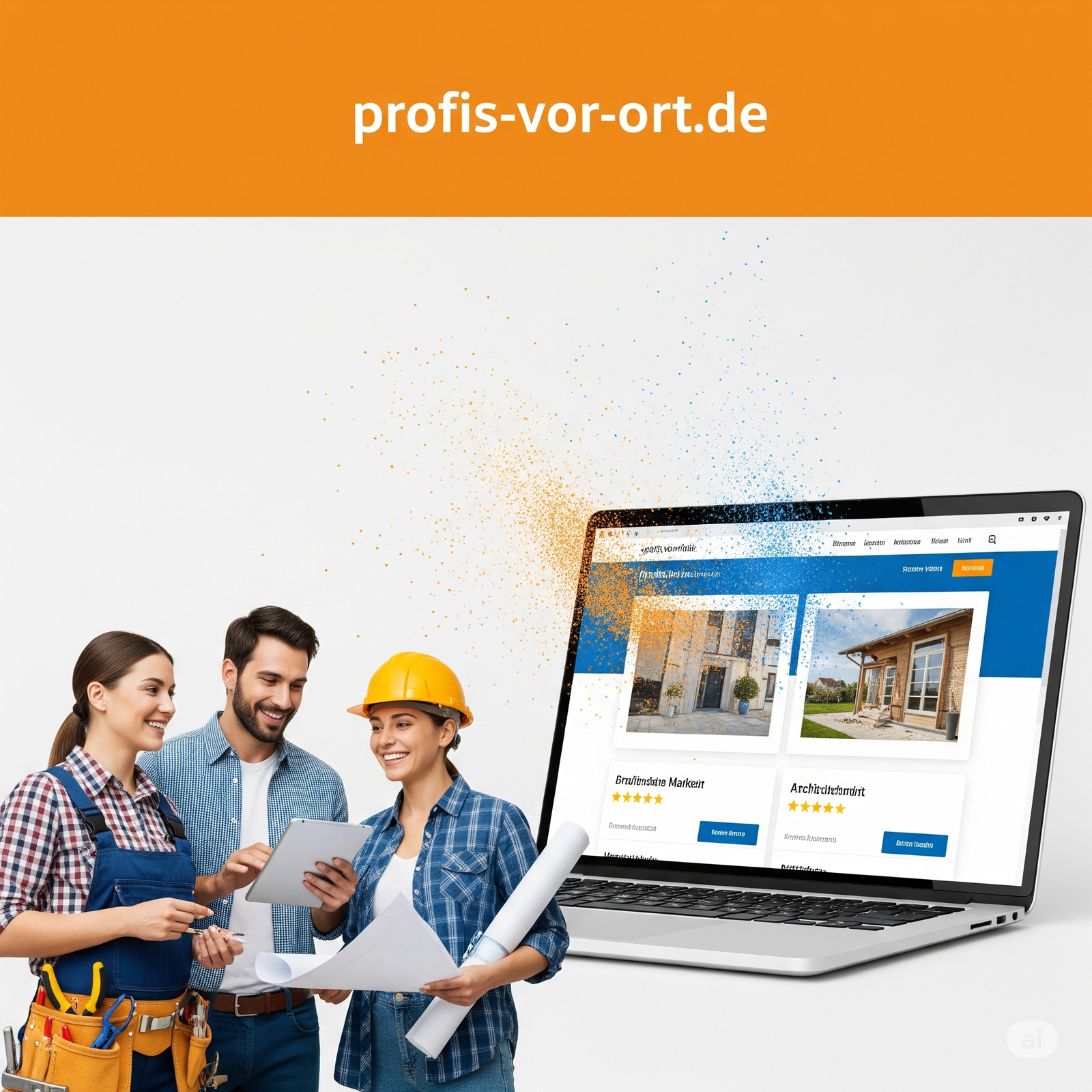The Ultimate Guide to Amazon SEO in 2025
Everything you need to know to choose the right agency and optimize your products for success.

1. What Exactly is Amazon SEO?
Amazon Search Engine Optimization (SEO) is the strategic process of enhancing your product listings to achieve higher rankings within Amazon's own search results. Unlike Google SEO, which focuses on websites, Amazon SEO is entirely centered on the marketplace's ecosystem. The primary goal is to make your products appear on the first page for relevant customer queries. This involves a deep understanding of Amazon's A10 algorithm, which considers factors like keyword relevance, sales velocity, conversion rates, customer reviews, and fulfillment method. A successful Amazon SEO strategy for Dortmund businesses means more visibility, more clicks, and ultimately, more sales.
2. Understanding the Amazon A10 Algorithm
The A10 algorithm is Amazon's internal ranking system. It's designed to show customers the products they are most likely to buy. Key factors influencing the A10 algorithm include:
- Click-Through Rate (CTR): The percentage of shoppers who click on your product after seeing it in search results.
- Conversion Rate: The percentage of visitors who purchase your product.
- Sales Velocity: The speed and volume of your sales over time.
- Keyword Relevance: How well the keywords in your listing match a customer's search query.
- Customer Reviews & Ratings: The quantity and quality of your product reviews.
- A+ Content: The use of enhanced brand content on your product detail page.
An expert Amazon SEO service in Germany will focus on optimizing all these areas to signal to the A10 algorithm that your product is the best choice for customers.
3. The Cornerstone: In-Depth Keyword Research
Keyword research for Amazon is fundamentally different from Google. It's about capturing high-intent, purchase-ready search terms. A thorough process involves using specialized tools (like Helium 10, Jungle Scout) to identify primary "head" keywords, long-tail keywords, and even competitor keywords. An Amazon SEO expert in Dortmund will also analyze German-specific search behavior, including local dialects or search patterns, to ensure maximum coverage. These keywords form the foundation of your entire listing optimization.
4. Anatomy of a Perfectly Optimized Product Listing
Once you have your keywords, you must integrate them naturally into your listing. Key areas include:
- Product Title: The most important element. It should include your top 1-2 keywords, brand name, and key features (e.g., size, color, quantity).
- Bullet Points: Use all five bullet points to highlight benefits, not just features. Weave in secondary keywords here.
- Product Description: This is your chance to tell a story. Use it to answer common questions and include long-tail keywords. For brand-registered sellers, this is where A+ Content shines.
- Backend Keywords: These are hidden from customers but indexed by Amazon. Use this space for synonyms, related terms, and common misspellings. Do not repeat keywords from your title or bullets.
5. The Power of High-Quality Visuals
Images sell products on Amazon. Your main image must be on a pure white background and clearly show the product. Subsequent images should include lifestyle shots, infographics highlighting key benefits, size comparisons, and instructional photos. High-resolution images that are zoomable are crucial for conversion. A top Amazon marketing agency will often provide professional product photography as part of their service.
6. Managing Customer Reviews and Ratings
Social proof is paramount on Amazon. A high number of positive reviews directly impacts your conversion rate and, therefore, your ranking. Encourage reviews through Amazon's "Request a Review" button or automated email follow-up services. It's equally important to monitor and respond to negative reviews professionally to show excellent customer service.
7. Leveraging A+ Content for Higher Conversion
For brand-registered sellers, A+ Content (formerly Enhanced Brand Content) is a powerful tool. It allows you to use rich media, custom images, and comparison charts in your product description. This not only improves the customer experience but has been shown to increase conversion rates by up to 10%, which sends a strong positive signal to the A10 algorithm.
8. The Symbiotic Relationship Between PPC and SEO
Amazon PPC (Pay-Per-Click) advertising and SEO are not separate strategies; they work together. Running PPC campaigns can kickstart sales for a new product, which boosts its organic ranking. Furthermore, the data from your PPC campaigns (e.g., which keywords convert best) is invaluable for refining your organic SEO strategy. A holistic Amazon agentur will manage both in tandem.
9. Building Your Brand with Amazon Stores
An Amazon Store is a free, multi-page storefront for your brand on the platform. It's a great way to showcase your entire product catalog, tell your brand story, and create a curated shopping experience. Driving traffic to your store can increase customer loyalty and average order value.
10. Driving External Traffic to Your Listings
Amazon's algorithm loves external traffic. Driving customers from sources like Google, social media, or your own website to your Amazon listing is a powerful ranking signal. Agencies like AI Linkboost specialize in this, using content marketing and social campaigns to create funnels that boost your product's authority.
11. Analyzing and Outsmarting Your Competition
A crucial part of any strategy is understanding what your competitors are doing. This involves analyzing their keywords, pricing strategy, review velocity, and listing quality. Tools like Semrush and Ahrefs, often used by the agencies we've featured, are excellent for this kind of competitive intelligence, allowing you to identify gaps and opportunities.
12. The Role of Pricing in Amazon SEO
While not a direct SEO factor, your price heavily influences your conversion rate. If your product is priced too high compared to similar items, your conversion rate will drop, negatively impacting your rank. It's about finding the sweet spot that maximizes both sales and profit.
13. FBA vs. FBM: Impact on Rankings
Using Fulfillment by Amazon (FBA) is a significant ranking factor. Products fulfilled by Amazon are Prime-eligible, which customers prefer. This leads to higher conversion rates and better rankings. While Fulfillment by Merchant (FBM) is an option, FBA is almost always recommended for serious sellers.
14. The Hidden SEO Killer: Stockouts
Running out of stock is detrimental to your Amazon ranking. A stockout halts your sales velocity, and it can take weeks or even months to regain the ranking momentum you lost. Proper inventory management is a critical, though often overlooked, component of a successful Amazon SEO strategy.
15. Expanding to Other Amazon Marketplaces
Once you've found success on Amazon.de, an agency can help you expand to other European marketplaces like the UK, France, or Italy. This involves professional translation and localization of your listings, not just a direct translation, to appeal to local customers.
16. Key Metrics to Track for Amazon SEO
How do you know if your SEO efforts are working? Key Performance Indicators (KPIs) to monitor include:
- Organic Keyword Rankings: Your position for target keywords.
- Total Sales & Organic Sales: Differentiating between sales from ads and organic search.
- Unit Session Percentage: Your conversion rate.
- Impressions and Click-Through Rate (CTR): Your visibility and how compelling your listing is.
17. Common Amazon SEO Mistakes to Avoid
Many sellers make preventable errors. Avoid these common pitfalls: keyword stuffing (overloading your listing with keywords), ignoring backend keywords, using low-quality images, and not actively managing customer reviews. A professional agency helps you avoid these costly mistakes.
18. Top Tools Used by Amazon SEO Agencies
Professional agencies use a suite of powerful software to manage their clients' accounts. The most common and effective tools include Helium 10, Jungle Scout, SellerApp, and Viral Launch for keyword research, listing analysis, and rank tracking. These tools provide the data necessary to make informed strategic decisions.
19. The Future of Amazon SEO: AI and Video
The landscape is always evolving. The future of Amazon SEO will likely involve more AI-driven optimization, an increased emphasis on video content in listings, and more sophisticated analytics. Working with a forward-thinking agency that stays on top of these trends is crucial for long-term success.
20. How to Choose the Right Amazon SEO Agency for Your Business
Selecting the right partner is critical for your success. Here's a checklist to help you decide:
- Proven Track Record: Ask for case studies and examples of their success stories. Look for measurable results like ranking improvements and sales growth.
- Specialization: Do they specialize in Amazon, or is it just one of many services? A dedicated Amazon marketplace agency will have deeper, more current knowledge.
- Transparency: They should be open about their methods and provide regular, clear reporting on key performance indicators (KPIs).
- Communication: A good agency acts as a partner. Ensure they are responsive and proactive in their communication.
- Understanding of the German Market: For sellers in Dortmund, an agency with experience in the German market (Amazon.de) is non-negotiable. They will understand local nuances, language, and competition.
Ready to find your perfect partner? Our list of the top 12 agencies is the best place to start. Each has been vetted for their expertise and ability to deliver results.

Why Trust Profis vor Ort?
We are Germany's leading directory for professional services. Our mission is to connect businesses with the best local and national experts. Our research is independent, thorough, and designed to give you the clarity you need to make informed decisions. We don't just list companies; we verify and vet them to ensure you're connecting with the best in the industry.
Post Your Company for Free